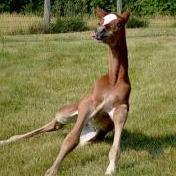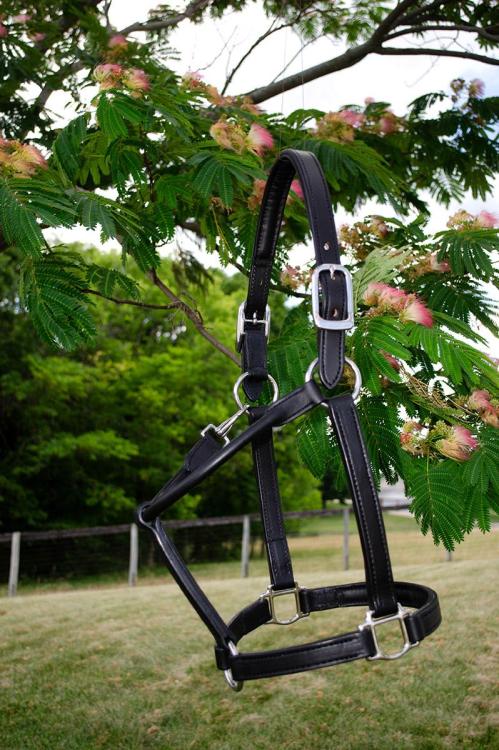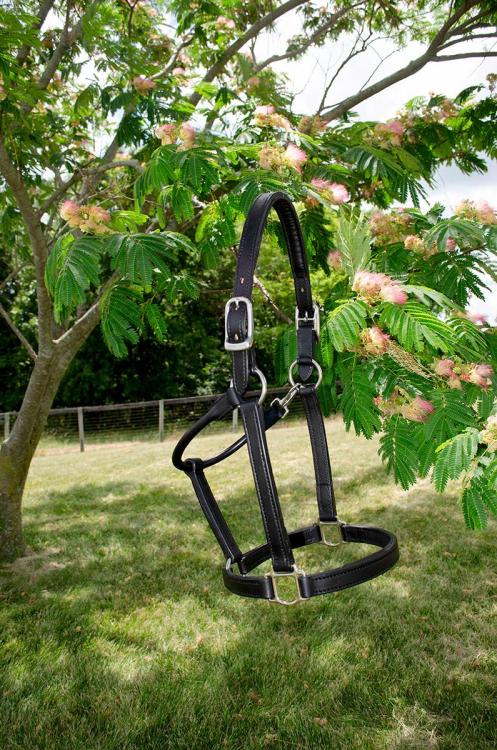-
Posts
1,282 -
Joined
-
Last visited
Content Type
Profiles
Forums
Events
Blogs
Gallery
Everything posted by TomE
-
What do you want to make? Ashley Hopper (Punky's Saddlery, Cuba MO) mentioned her plans to host courses in her new workshop. https://www.facebook.com/share/p/iuoAHCCXYq7r1d3P/?mibextid=oFDknk Lisa Sorrell (Sorrell's Custom Boots, Guthrie OK) teaches boot making courses. https://customboots.net/
-

Dyed leather is returning to original color??!!
TomE replied to AmericanSon's topic in How Do I Do That?
Have you tried dip dyeing a piece that is dry? You mentioned soaking the hides (in water?) before dyeing. That might require longer for the water be displaced by the dye solution. I certainly see that wet edges take up less Pro Dye than dry edges. Does the lighter color develop after the leather is fully dry or while it is drying? It sounds like you're in touch with the tannery so I would ask them for dyeing tips. I am not familiar with Angelus deglazer but the Fiebings deglazer is a mixture of organic solvents (MSDS mentions ethyl acetate and ethanol) and I think it's designed to minimize removal of existing dye from the leather. Folks use acetone and lacquer thinner for thinning Fiebings leather dye and pro dye, instead of Fiebings dye reducer, which might be an milder alternative for pretreating the leather before dyeing. -
How we sew is each leatherworker's doctrine. It depends on your goals. Lots of great advice in the pinned post that @Northmount shared above. For me, the first consideration is thread size for a project and the stitch spacing depends on thread size and the leather thickness. Unless I am sewing on a machine, I will tend to use the finest spacing I can tolerate and an awl that makes the smallest holes to fit the thread. The only time I pre-punch holes is when sewing leather to woven fabric, to avoid cutting the woven threads with an awl. For example sewing girth straps/billets on the webs of a saddle. For most other projects using an awl ensures that the holes line up and that they aren't too big for the thread. Looks tidy and makes for stronger seams. I use a slanted pricking iron or an overstitch wheel to mark the holes, and a $10 sewing awl. Mostly 9-10 SPI or 6-7 SPI. I don't do production work. It is all made to order. Fine stitching with design details that can't easily be mass produced is how I try to set my work apart. Using a drill, chisel, or round tooth irons for the holes is against my religion.
-
Beiler's catalog shows a wax pot assembly (#44160) that appears to be the style in your photograph with the thread wipers. $70.00 The part is shown as a drawing not a photograph so I can't judge what it is constructed of. Call them for info and a catalog. 717-768-0174
-
Beiler's doesn't have a website. Call for a catalog. They carry a wide range of leather, supplies, hand tools, and machines and parts. For example, they sell Juki sewing machines and parts. They cater to the harness and saddlery trades but this includes general leathercraft tools (Osborne) and supplies (Fiebings). They do also sell some finished harness and riding horse tack, rope products, and stable supplies. I have been pleased with their quality, prices, and service.
- 14 replies
-
Looks like a good list. I would add Beiler's Manufacturing (Hermann Oak, Wickett & Craig, and SB foot leather and lots of hardware), Batz Corp (heavy brass and nickel hardware), and Zack White Leather (hardware for tack). Also Jerimiah Watt (Ranch2Arena.com) for conchos and tools. Bruce Johnson Leather for tools.
- 14 replies
-

And now, for something completely different...
TomE replied to TomE's topic in Saddle and Tack Accessory Items
Thank you! I find that repairs are a good way to learn how tack is made and where the weak points are. -

And now, for something completely different...
TomE replied to TomE's topic in Saddle and Tack Accessory Items
Thanks, everyone. I am enjoying learning to refine my skills. -

Action Co Maker, Mckinney, TX Saddle
TomE replied to Lealah's topic in Saddle Identification, Restoration & Repair
I know nothing about western saddles, but the Saddle Restoration Facebook group has a lot of saddle identification posts. Also, the owners of Ruxton's Trading Post in Manitou Springs CO are experts who might assist you. They have written books, and articles for Western Horseman about historic saddles and their value. -

Medicine Bag Necklace
TomE replied to dhaverstick's topic in Purses, Wallets, Belts and Miscellaneous Pocket Items
That is an epic level of cool for Cool Johnny! Beautiful work and so many original details. The colors are great and the accents on the medicine bag frame the whole necklace. Powerful medicine. -
Beilers sells "Chrome Tanned Oiled Sides" in 5/6 oz that I use to cover padding on horse tack and I split it for lining belts and straps. It is smooth and slick (should clean up well) and comes in a variety of colors. I think it would make a nice apron. The side I received was produced by the SB Foot Tanning Co who supply Red Wing Shoes with leather. https://www.sbfoot.com/
-

Pedersen 309 and Pedersen 300 sewing machines
TomE replied to Mulesaw's topic in Leather Sewing Machines
Looks like an adventure! Keep us posted, Jonas. I am considering buying a large clicker press from a friend for less than a custom die will cost. He closed his business making boot insoles for major brands like Thorogood and has retired. It would take up space in my machine shed but I'm considering clicking out the yokes and decorative pieces for farrier aprons like the one I previously posted. I haven't done any production work before and I'm debating whether to branch out or stick with made to order tack. -

Lining Sheath: Rough or Slick Side In?
TomE replied to Gosut's topic in Gun Holsters, Rifle Slings and Knife Sheathes
A leather rougher/scratcher will prep the grain side for gluing if you need a strong bond to the grain. The wire teeth are pointed and sharp to tear through the grain and create a suede like surface. A wire brush doesn't do this. I routinely rough up leather filler strips inserted into a rounded leather piece that is wet molded around the filler. Roughing the leather is necessary to hold it together until the leather dries and can be sewn. The larger rougher in the link below is a very sturdy tool. You can find smaller roughers at lots leather crafting supply retailers. https://sorrellnotionsandfindings.com/product/scratcher/ -
@bruce johnson is an expert who can advise you on value and how to refurbish.
-

Different leathers, different ounces, so confusing!
TomE replied to Pqstraub's topic in Leatherwork Conversation
Harness and bridle leathers are vegetable tanned cow hide that is stuffed with fats/waxes for water resistance. Plain vegetable tanned leather will accept tooling, stamping, and wet forming better than bridle or harness. Harness leather is generally stiffer than bridle bc of additional waxes added during the currying process. Bridle leather typically has a more polished/shiny finish than harness. I make English reins for jumpers and dressage out of 9/10 oz bridle leather. I make split reins for western riding from 10/11 oz harness leather. The split reins that I am familiar with are not sewn. The bit end either folds back on itself, or is capped with a leather chape and is tied with a latigo saddle string. I think the best bridle and harness leathers in North America come from the Herman Oak Leather Co. and Wickett and Craig Leather. The Hermann Oak bridle and harness leathers tend to be stiffer, which I equate with stretch resistant. Wickett and Craig is a bit softer temper and they offer bridle and harness leathers in a wide variety of colors. You can request samples from either tannery. Both are top quality tanneries. Wicket and Craig has no minimum order whereas Hermann Oak generally requires a minimum of a roll = 5 sides. Single sides of either leather can be purchased from retail distributors. You can request a side for reins and they will select a larger hide that should cover 7+ feet along the topline. Springfield Leather sells Hermann Oak and does a lot of custom clicking/cutting. They could probably sell you the straps you need for reins. -
Weaver Leather Supply has 3" SS flat cinch buckles, and 3" polypropylene webbing.
-
Also linen has a unique look compared to synthetics that are twisted or braided. I like how it feels when hand sewing but rarely use it for horse tack.
-
For bridle leather, Fiebings Aussie conditioner tends to maintain the original color better than Blackrock Leather N' Rich, Bickmore Bick 4, and Effax Lederbalsam. I apply a light coat of neatsfoot oil before conditioning. Once the oil soaks in the original color returns. I don't seal projects, except the edges, so I don't have expeience with those finishes. Another idea is to use neutral shoe polish for shine and some water resistance. I think it will stay on top of the grain. Lincoln stain wax (shoe polish) is a quality product.
-

Dachshund bag
TomE replied to Stetson912's topic in Purses, Wallets, Belts and Miscellaneous Pocket Items
That bag is a winner. Lots of techniques that I don't know how to do. Looks like fun. -

Belt Buckles
TomE replied to Stewart's topic in Purses, Wallets, Belts and Miscellaneous Pocket Items
Love your creativity. Beautiful, original work as always. My biggest design decision is - do I use a black strap or a brown strap? -
Welcome, fellow Midwesterner. Check out the pinned posts in the Computer Help forum for tips on posting pictures. I use Photoshop for this purpose but there are free options for resizing.
-
The Saddle Restoration Group on Facebook has a lot of traffic by folks who buy and sell saddles. Have you posted there?
-
I am sorry to hear that. He will be missed on this forum.
-
Might consider a swivel with 2 rings or squares. More to choose from at Weaver, Buckle Guy, Batz Corp, Bieler's Manufacturing. Could attach one ring to the project with a leather chape or loop. Stohlman shows examples for attaching buckles and rings in volume 1 of his case making books.




